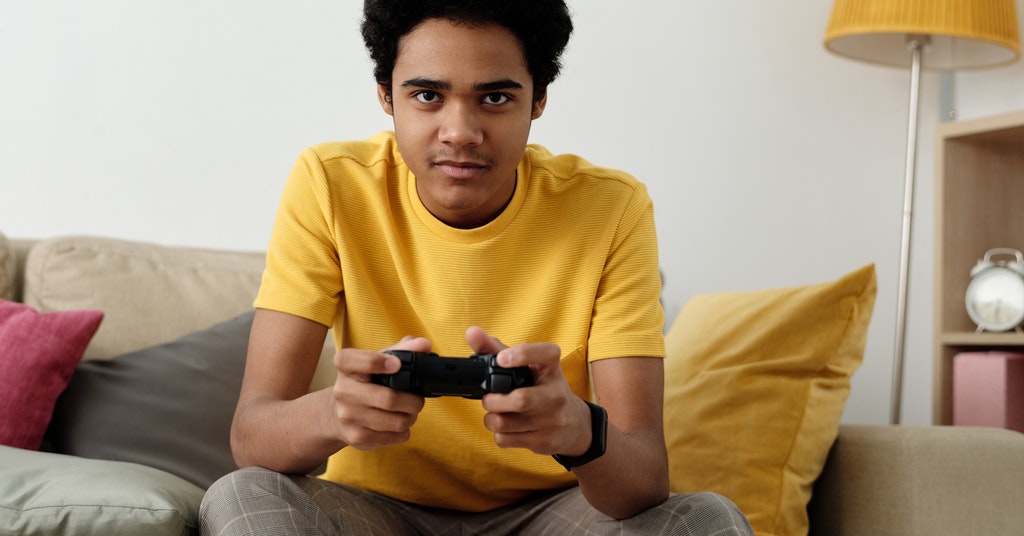
DJ Troi Lee’s workshops for deaf DJs
January 31, 2022
My experience coping with tinnitus (ringing in the ears)
February 7, 2022Study: BSL users’ experience with hearing aid clinics

There are approximately 151,000 British Sign Language (BSL) users in the UK. How many BSL users also use hearing aids or implants is unknown. A recent study by Manchester University is the first study to explore BSL users’ experiences of hearing aids and hearing aid clinics in the UK.
About the Study
“Exploring the lived experiences of British Sign Language (BSL) users who access NHS adult hearing aid clinics” is a study by Celia Hulme. She is a postdoctoral student at the School of Health Sciences, Manchester University, UK.
Hulme interviewed eight BSL users who were experienced NHS hearing aid clinic users and who identified as culturally Deaf. She interviewed each participant using BSL. The results were then analyzed using the Interpretative Phenomenological Analysis (IPA) method. IPA is a psychological analysis technique that helps researchers make sense of how a “given person in a given context understands a given phenomena,” as described by Wikipedia. The method is frequently used in the health psychology world.
Reasons for Using Hearing Aids
The study explored participants’ reasons for wearing hearing aids. Hume wrote that there are numerous reasons why Deaf signers wear hearing aids yet access to spoken language is not a priority.
Instead, what the study found was important were the benefits of access to sound in different ways, and how the users felt. “All remarked that they used hearing aids for ‘awareness of audible background noises,’ which makes them feel comfortable and safe. Similarly, because hearing aids for some enabled the monitoring of the volume of their own voice, this could result in feeling more confident and more in control.”
Some of the reasons for wearing hearing aids mentioned by participants in Hulmes’ study were as follows:
- They make me feel grounded and safe.
- To hear background noises.
- I wanted to hear my children, so I went back to hearing aids before I gave birth.
- To assist with lipreading and background noises.
- I wanted to listen to music.
- They help with my tinnitus.
- To talk to my children.
- For health and safety purposes at work.
- To show that I’m deaf.
It is worth noting that most of the participants had been hearing aid users since childhood and understood speech. However, about half of them stopped wearing their hearing aids for a period of several years at least once in their life.
BSL Users’ Experiences of Hearing Aid Clinics
The study split its findings on hearing aid clinics into four categories:
- Being allowed to manage their own hearing aids. Around half the participants were allowed to re-tube their own hearing aids, whereas the others were not. However, it’s unclear whether this was because they were Deaf or just standard medical practice. One participant said, “Yes, I can do it myself, I am used to it and have lived with it all my life. They said no.”
- Seeing the ear and not the person. Some participants felt that their audiological practitioner didn’t consider their individual needs and desires, and merely looked at their hearing. Participants clearly preferred a whole-person approach to audiological care. One participant said, “She does not understand my life or how I communicate.”
- Inequality in accessing NHS hearing aid clinics. Most of the participants attended drop-in sessions without an interpreter and struggled through briefer appointments. However, they used an interpreter for longer sessions. Most hearing aid clinics offered a phone number, which is useless to a Deaf patient. Many of the study’s participants have since been provided email addresses instead. One participant said that the email address has “afforded her independence and equality, which she appreciates.”
- Cultural awareness. Participants generally agree that Deaf awareness in the NHS is not as good as it could be. They’d like to see this improve. At least two participants stated that “their audiologist displayed very little Deaf awareness and made little attempt to communicate with them directly.”
Read more: 5 tips for booking and attending a medical appointment with hearing loss
Study Summary
Hume stated in the report summary: “An assumption that somebody may be able to ‘get by’ if it seems they can lipread or speak is a breach of patients’ rights to their preferred language and is therefore unacceptable. As a result, it is essential for hearing aid services and staff to review their cultural competence practices with sign language users.”
She went on to say that “Services provided by the NHS should be equitable, responsive to the diverse needs of patients, and be culturally inclusive. According to our participants’ narratives, they did not experience cultural competency from their hearing aid services. For example, most hearing aid services did not facilitate an environment in which the patient’s first language, BSL, could be used.”
“Services provided by the NHS should be equitable, responsive to the diverse needs of patients, and be culturally inclusive.”
Study Limitations
The limitations of the study were identified in the summary: “A limitation is the small sample size. Findings based on eight expert informants might have limited generalisability as their views may not be fully representative of the diverse range of Deaf signers who wear hearing aids. The age range of the participants, the youngest recruit was 30 years old, is also a limitation.
The younger culturally Deaf generation’s hearing priorities and use of hearing aids may be different arising from their lifestyle, political landscape, and the era in which they grew up. Another limitation to the study is that a membership check during analysis was not conducted. The first author is a sign-bilingual, but no independent verification of her translation was carried out. However, the study’s strength is that it is the first that has engaged with the Deaf community about hearing aids from a culturally Deaf perspective led by a Deaf researcher.”
Read more: How I discovered my deaf identity
Study Conclusions
“Although there were some examples of good practice in audiology services meeting Deaf people’s needs, the cultural-linguistic identity of Deaf signers was not prominent resulting in Deaf people reporting disempowerment and lack of autonomy,” the study’s conclusion reads. “There is scope for further consideration of Deaf patients, hearing aid service staff, and service management to build a more culturally sensitive and tailored service. Furthermore, this study, with a rich data source, will contribute to survey design and development that is aimed at Deaf signers who wear hearing aids.”
Indeed, this study is ground-breaking, and offers plenty of suggestions for the NHS to improve audiology services for BSL users. It also provides medical practitioners with valuable insight into why Deaf people choose to use hearing aids.
Read more: 10 things to know about being d/Deaf



